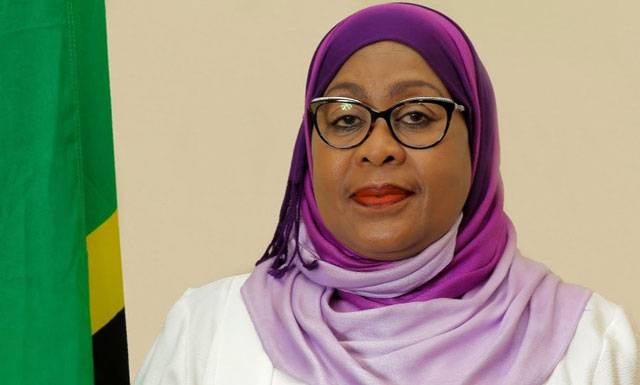Tanzania’s new President, Samia Suluhu Hassan is expected to visit Uganda this weekend for a meeting with President Yoweri Museveni.
While the purpose of the visit has not been formally communicated, insider information indicates that H.E Samia Suluhu Hassan is set to sign the long waited Final Investment Decision (FID) to kick off the construction of East African Crude Oil Pipeline (EACOP).
The event for signing the oil pipeline deal was scheduled for March 22, 2021 but was rescheduled following the death of president John Pombe Magufuli who died five days earlier on March, 17.
Sunday’s visit will be Suluhu’s first trip outside Tanzania since she took oath as president on March 19.
The East African Crude Oil Pipeline (EACOP), also known as the Uganda–Tanzania Crude Oil Pipeline (UTCOP) is under construction and intended to transport crude oil from Uganda’s oil fields to the Port of Tanga, Tanzania on the Indian Ocean. Once completed, the pipepline will be the longest heated crude oil pipeline in the world.
The 1,445 kilometer-long pipeline pipeline will cover 296km in Uganda passing through Hoima, Kyankwanzi, Mubende, Gomba, Kyotera, Lwengo, Ssembabule, Rakai and Kikuube and 1443km in Tanzania through the regions of Kagera, Gieta, Shinyanga, Tabora, Singida, Dodoma , Manyara and Tanga.
By signing the FID and construction of the pipeline suffered a setback last year having been delayed by the Covid pandemic and Magufuli’s death.
Uganda previously agreed to build a joint Uganda–Kenya Crude Oil Pipeline to the Kenyan port of Lamu. However, concerns regarding security and cost, motivated parallel negotiations with Tanzania regarding a shorter and safer route to Port Tanga, with the support of the French petroleum conglomerate Total SA.
The $3.5 pipeline project is being implemented by a joint venture of CNOOC and Total; Uganda government through the Uganda National Oil Company and Tanzania Petroleum Development Corporation.
The project is expected to create jobs, help in technology transfer, creation of new infrastructure and enhance trade between Uganda and Tanzania and the East African region at large.
Uganda has proven oil reserves exceeding 6.5 billion barrels, of which about 2.2 billion barrels are recoverable. The country plans to build a refinery in the Western Region to meet local and regional demand, with the rest exported via pipeline to the Indian Ocean coast
The oil was discovered in the Albertine Graben on the border between Uganda and DR Congo at the Kingfisher and Tilenga fields.
The two oil fields are operated by China National Offshore Oil Corporation (CNOOC) and Total S.A.
Chronology of events:
Construction originally was planned to start in August 2016 and last three years at a budgeted cost of US$4 billion, providing approximately 15,000 construction jobs and 1,000 to 2,000 permanent jobs. In March 2016, the Daily Monitor newspaper reported that Total E&P was prepared to spend US$4 billion (UGX:13 trillion) to fund construction of this pipeline.
Following meetings between delegations led by the oil ministers of Tanzania and Uganda, held in Hoima in July 2016, it was announced that construction of the 1,443 kilometres (897 miles) pipeline would begin in January 2017. Completion was planned for 2020.
On 11 September 2020, Total SA and the government of Uganda signed the Host Government Agreement (HGA) for the East Africa Crude Oil Pipeline (EACOP) project, at State House Entebbe. This was expected to lead to Final Investment Decision (FID), by the end of 2020.
Two days later, President Yoweri Museveni of Uganda and President John Pombe Magufuli of Tanzania signed an agreement in Chato, committing to jointly construct the 1,445 kilometres (898 miles) East Africa Crude Oil Pipeline, at an estimated cost of US$3.5 billion with work on the pipeline scheduled to start by the end of 2020. Once started, construction of the pipeline was expected to last about 36 months.
On 27 October 2020, Total SA and the Government of Tanzania signed an HGA to governs the dealings of the two entities regarding the EACOP, 70 percent of which was to pass through Tanzanian territory with laying of the pipeline anticipated to begin during the first quarter of 2021.
